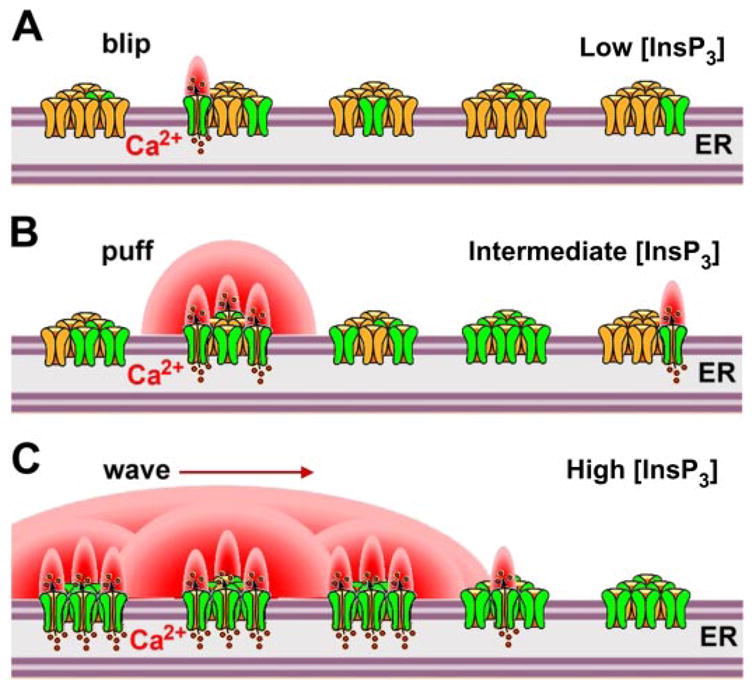FIG. 1.

Schematic of the behaviors of inositol trisphosphate receptor (InsP3R) channels in the presence of increasing concentrations of InsP3. InsP3Rs are shown arranged in clusters that form discrete release sites within the continuous endoplasmic reticulum. A: at low [InsP3] during weak agonist stimulation, few receptors (in green) bind InsP3. Others (in yellow) are not InsP3 liganded and therefore not activated. Consequently, highly localized small Ca2+ signals (“blips”) are generated by Ca2+ released through a single or few InsP3R channels raising cytoplasmic Ca2+ concentration (shown in red). B: at higher levels of [InsP3], coordinated openings of several channels (InsP3 liganded) within a cluster is triggered by Ca2+ release from one channel acting as an activating ligand to stimulate gating of nearby channels through a process of Ca2+-induced Ca2+ release (CICR). C: even higher [InsP3] evokes global propagating Ca2+ signals (waves). Ca2+ released at one cluster can trigger Ca2+ release at adjacent clusters by CICR, leading to the generation of Ca2+ waves that propagate by successive cycles of Ca2+ release, diffusion, and CICR. [Figure kindly supplied by I. Parker and N. Callamaras. Adapted from Parker et al. (358).]
